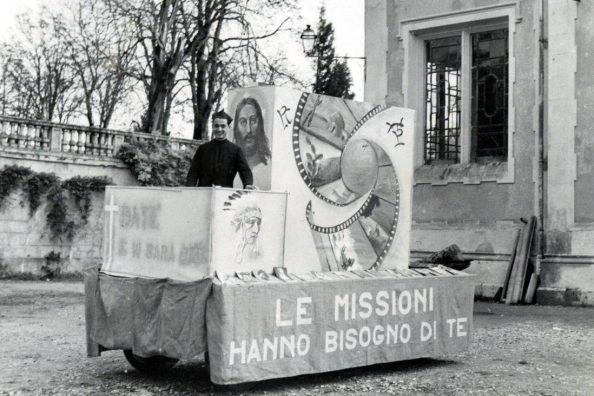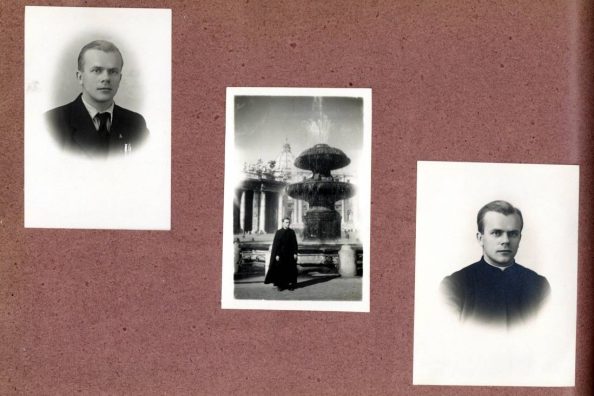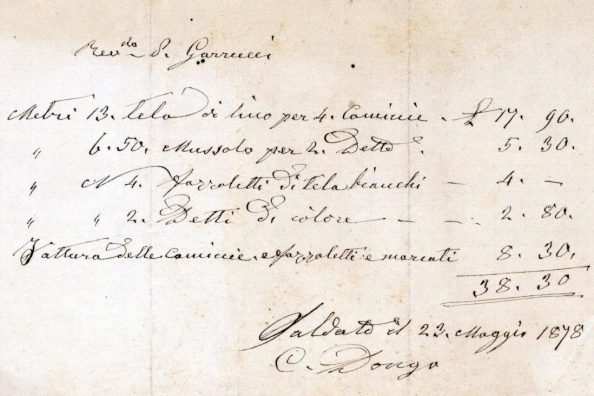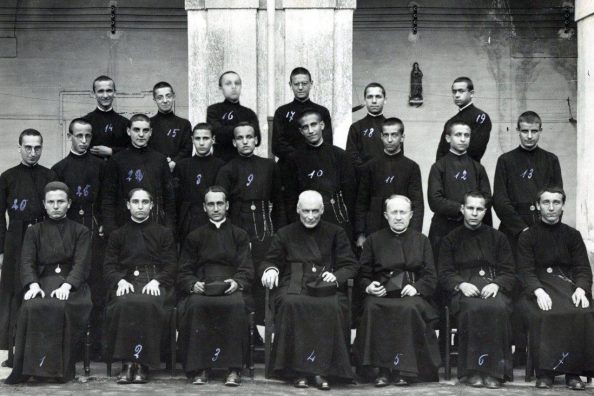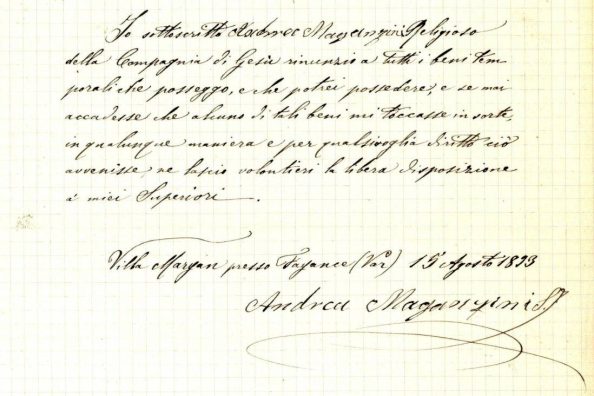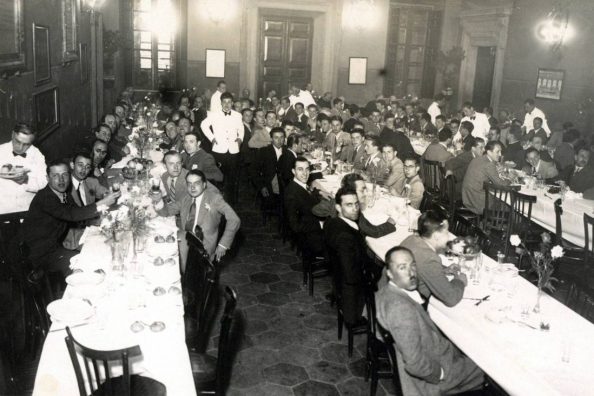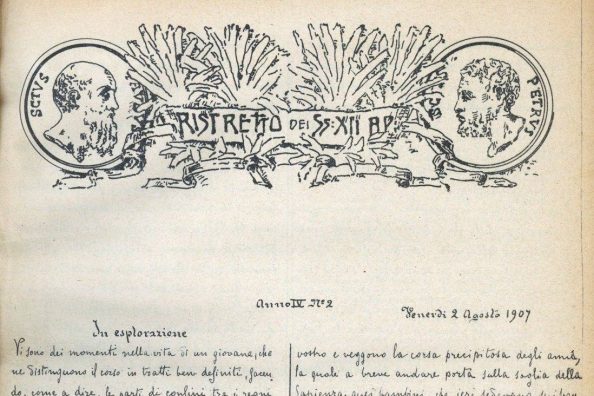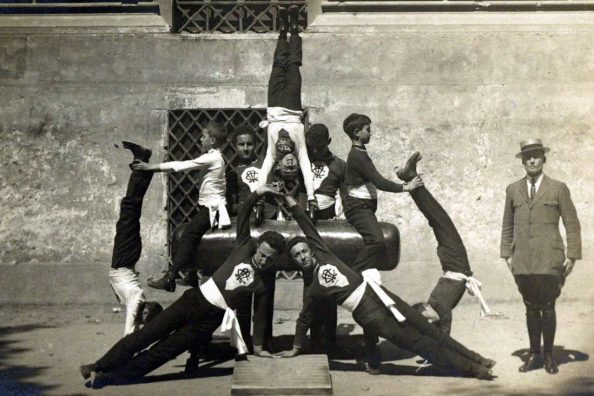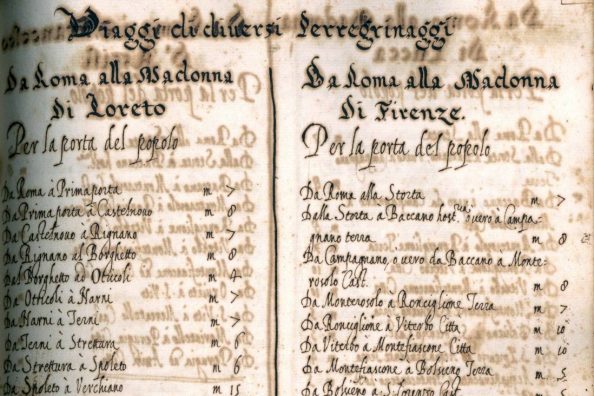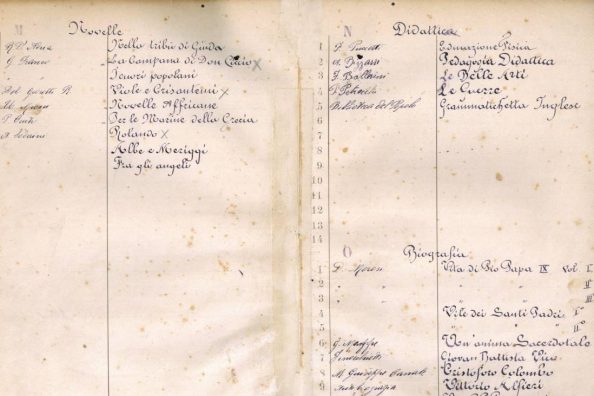The tasks of a sacristan
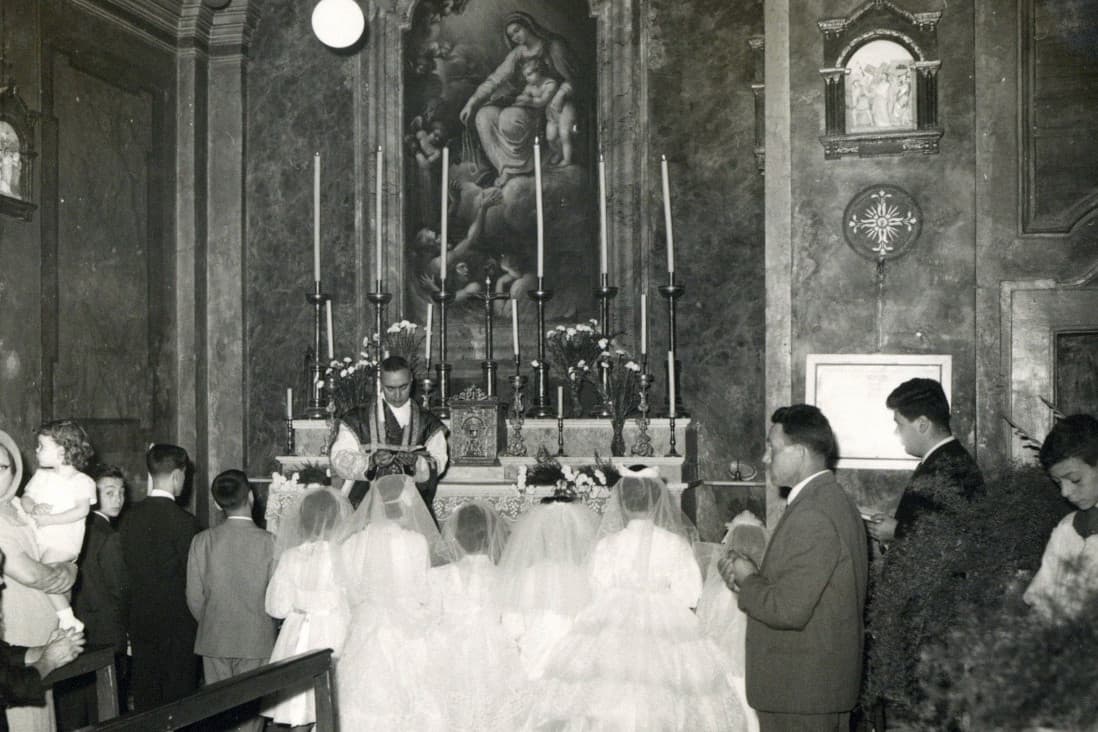
What duties does a sacristan have? How is an altar decorated? What sacred vestments are used on certain liturgical occasions? These are just some of the questions that can be answered by consulting the “Diary for the sacristan brother of the church of St. Ignatius in Castel Gandolfo”, preserved in the Roman Province Fond.
The role of the sacristan
Every Jesuit, in the course of his religious journey, was called upon to carry out various tasks; the brothers ensured the management and maintenance of the residences, some worked to ensure the functioning of the churches, the setting up of altars and the care of liturgical vestments.
The sacristan was in charge not only of the church where the Jesuits of the community celebrated mass, but also of the chapel inside the residence, the altars and statues in the house, in front of which flowers were often placed.
The sacristan’s work followed the liturgical year, so he had to change the sacred vestments according to the festivities, call the faithful to prayer, keep the sacristy and church rooms clean, and take special care of the Tabernacle and the altar.
The diary and its author
The author of the source is Brother Cavasinni, who in 1885 was destined by the Provincial to the novitiate at Castel Gandolfo with the task of sacristan of the adjoining church. A few years later, in 1901, already at an advanced age of 71, he decided to put down in writing all the information about his office to pass on to his successors.
Brother Costantino, who was born on 28 October 1831, had entered the Society of Jesus on 3 February 1857 in Rome and had taken his Last Vows on 15 August 1867, died at Castel Gandolfo on 1 April 1903.
In the introduction, written by another Jesuit, the brother sacristan is remembered with these words:
“He loved the cleanliness of the church to the point of scrupulosity; the care he took in guarding the things belonging to divine worship was most delicate, and he was often seen – when the illness that extinguished him gave him some respite – recollecting the sacred vestments with loving diligence. An enemy of idleness, all the time he had left over from his occupations, especially in his later years, he spent in prayer and reading pious books”.
Work in the church
Let’s read about the daily and painstaking work done by the Jesuit on certain feast days, starting with that of St Ignatius, which falls on 31 July, the day of his death.
From the diary:
“At 5 o’clock the Church is opened and 4 candles are lit to the Relic, 6 controlumi and the lamps of all the altars. […] If there is any Bishop or other distinguished Prelate, it will be the concern of the Prefect of the Church to see to it that everything proceeds with order and decorum. At a bishop’s Mass, the genuflection covered with a red cloth, two cushions, the canon, the lieu: on the sideboard the chalice, the host, the purification table are placed, on the altar all that is necessary for dressing and the six tall candles are lit.
In the sacristy, preparations are made for the sung Mass; for this solemnity the vestment in thirds is taken from the Mater Pietatis Chapel, silver thurible, 4 torches, crumpets. In the Church the sideboard is prepared, that is, the chalice with the bag and corporal, purificatory and host, two missals, small ampoules with water and wine, bell etc. everything is covered with the humeral veil.
Once the sung Mass is over and the solemn blessing has been prepared, the relic is displayed on the Mensa of the Altar of the Sacred Heart with six candles and flowers”.
In sung masses, hymns and psalms were often sung by novices and collegians of the scholae cantorum.
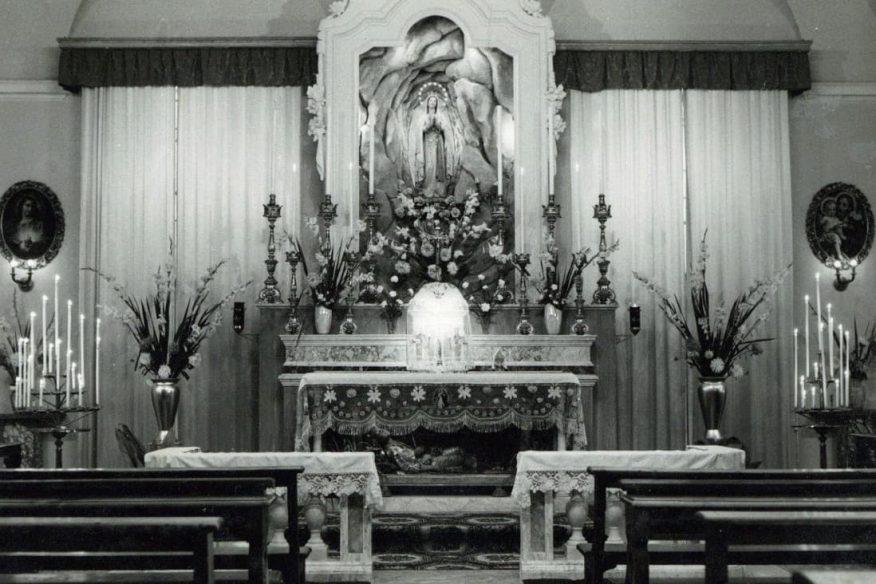
Ordinary work
In a small appendix, advice and practices are given for other occasions, from which we can reconstruct life in Jesuit communities: Sundays, the first Friday of the month, Mass at Carnival time, the fifteen Saturdays of the Holy Rosary, the triduum to Our Lady of Pompeii and the Rosary, the death of a brother.
The death of a Jesuit
“The sacristan must send to the deceased’s room the styled cross, the chasuble, two surplices and black stole, the bucket with holy water, and four candles for the accompaniment.
Meanwhile, the black chasuble and two surplices are prepared. In Church, 4 candlesticks with candles are prepared to be placed in the 4 corners of the coffin. The black cope and two death missals are taken to the high altar. For the officiation, 4 controlumi are lit. For the absolution the thurible and the two-ounce candles are prepared, as many as there are in the choir”.
Sundays
“Every Sunday of the year the Holy Rosary is prayed in our Church. In the sacristy, the vestments and stole are prepared for the priest, four more vestments for the novice assistants, the humeral veil, the thurible and two torches. At the end of the three signs of the bells, four candles are lit on the first step, then the Priest with two novices goes to the altar and begins the Holy Rosary.
At the fourth mystery the six candles of the second step are lit. At the end of the Rosary, the Priest opens the ciborium, incenses and intones the litanies. Towards the end of the litanies, the two torchbearers and the thurifer chant the “Tantum ergo” and the Blessing with the Sacred Pyx and then “God be blessed”.
Many of the liturgical practices described by the Jesuit are performed differently today, ‘lightened’ by the Second Vatican Council and its new prescriptions.
Similarly, the vestments and modalities of certain rites for the community, such as funeral vigils, are performed differently today.
The diary helps us understand what the setting of the church was and how important it was for the faithful as well.
Maria Macchi
